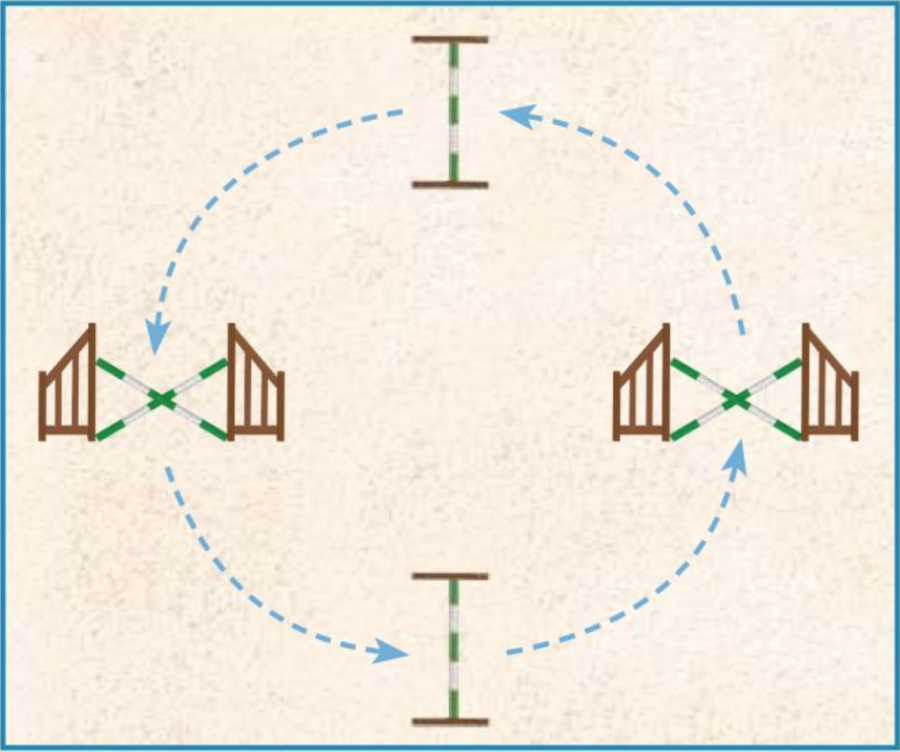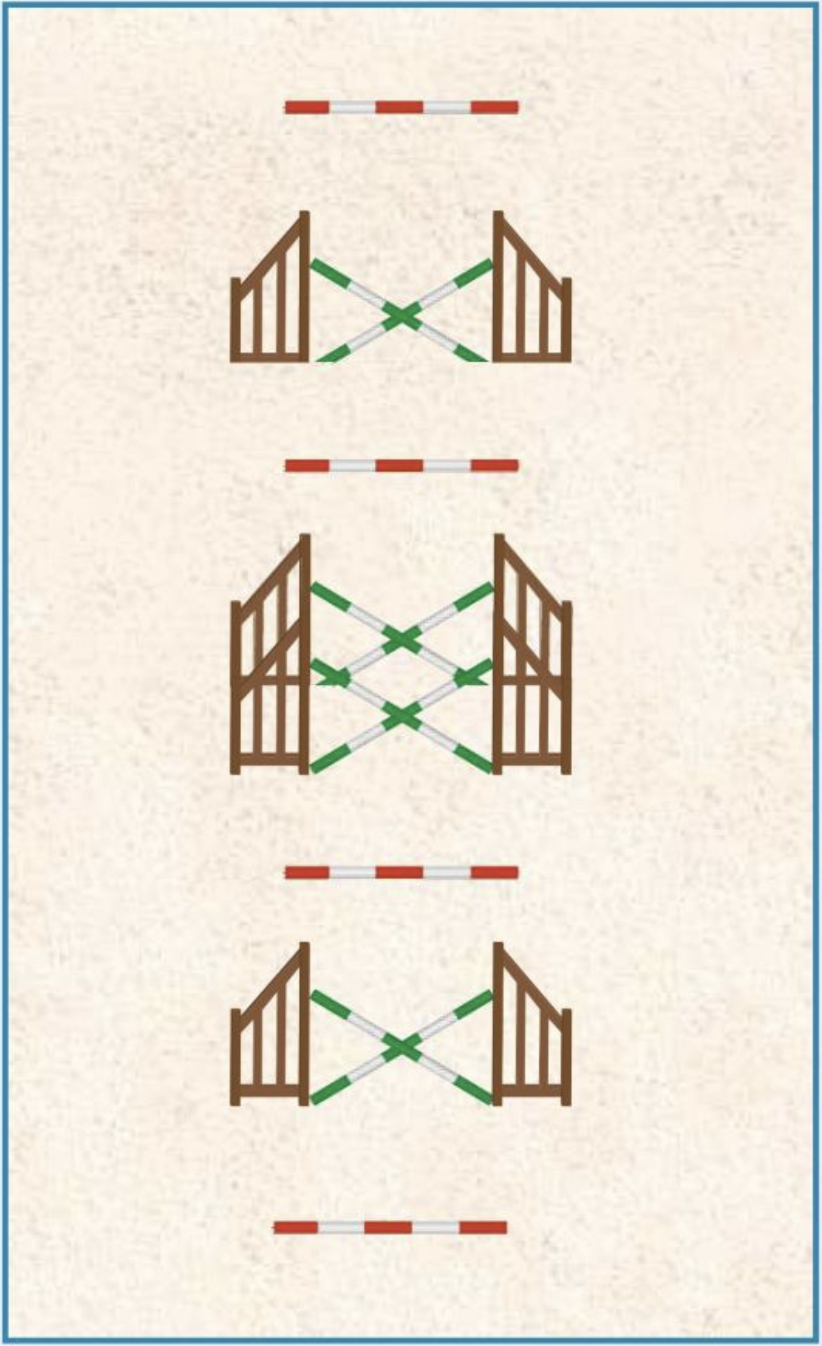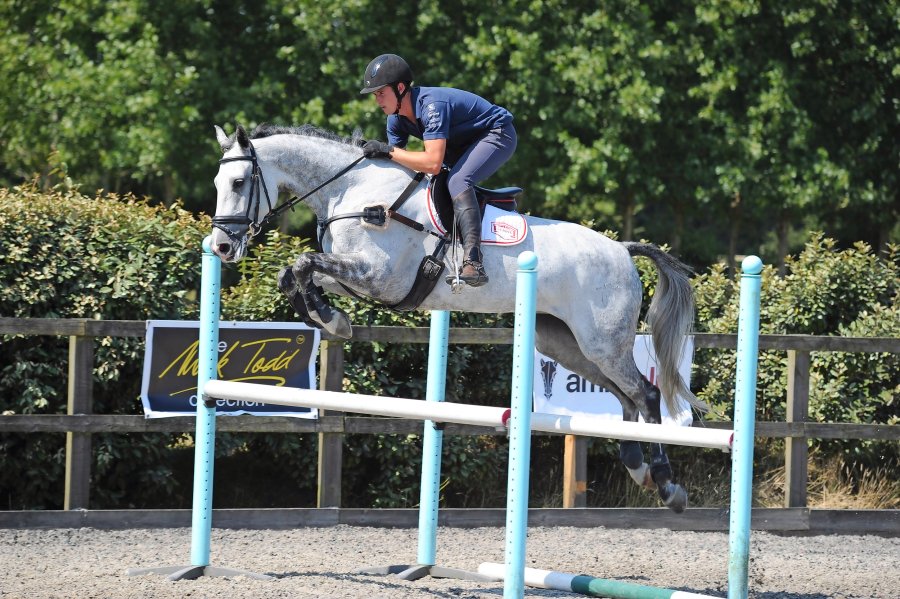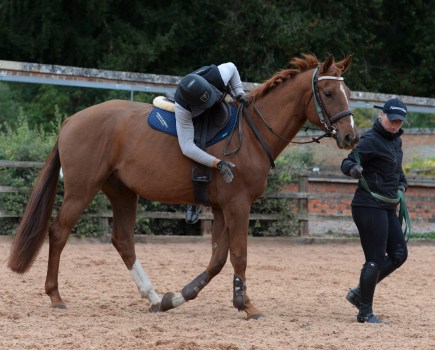When you are jumping a horse, you must be able to keep your horse in a correct, regular rhythm and control their stride length. According to showjumper Will Fletcher, these are both crucial factors when it comes to jumping clear or not. When your horse is listening to you and on the same wavelength, it makes your job as the rider so much easier.
“Three of the best exercises I use at home that really help my horses are also great for teaching you to use all the aids, rather than just your hands,” says Will. “When shortening a horse’s stride, a lot of riders just pull the reins and don’t take into account their other aids. It’s the same when lengthening the stride — some riders just apply more leg pressure and ignore everything else.
“It’s important for a rider to have full control of their hands, seat, legs and body so that everything moves together in one smooth motion. Being as smooth and soft as possible creates a much better rhythm and makes it easier to adjust your horse’s stride length.”
Will Fletcher’s jumping exercises
Will explains three exercises to help you to master the art of controlling your horse’s stride length below. Before starting, make sure you have warmed up in walk, trot and canter.
Exercise 1
Time: 10 minutes
To begin a training session, I like to start with an exercise over poles to get into a nice rhythm with my horse. You can never do enough polework. It helps you to develop your eye for a stride without overworking your horse.
This exercise is also really helpful for a horse who can get out of control as it enables you to get them between your hand and leg and back under control. Additionally, with it only being poles, it doesn’t matter if you mess up, or if your horse isn’t listening enough.
Set it up: Set out three poles with six canter strides between them.
How to ride it
- Ride around the outside of the school in canter before making your turn and cantering over the three poles, ensuring you get six even strides between each pole.
- Now start changing the number of strides you ask for, so you could aim for a six and a seven, or a six and five, or five and seven – any combination to make your horse lengthen and shorten their stride when asked.
- Make sure you have enough leg on throughout, especially when adding a stride. This will help to get your horse more up and together and stop them dropping the contact.
Exercise 2

Exercise 2
Time: 10 minutes
The objective here is to stay in a good, balanced canter rhythm, which is so important in the ring. This exercise helps to keep your horse on a nice bend and softens them up on both reins.
Start this exercise on the rein your horse feels more comfortable on and then switch to the side that needs more improvement.
Set it up: Place four cross poles in a circle with a four-stride distance between each fence.
How to ride it
- To begin with, particularly if your horse is young or inexperienced, just jump fences one and three, missing out the alternate fences.
- Once you both feel comfortable doing this, add in a third fence, and then the last until you’re jumping all four.
- You can keep going round on the circle two or three times if you’re still in balance. However, if you feel that your balance isn’t great, just miss out a fence and then start again at the one after.
Exercise 3

Exercise 3
Time: 10 minutes
Now we’ll use a mixture of ground poles and cross-poles to help your horse really use their back, and keep balanced and straight through a combination. This is important, as most faults at doubles and combinations occur because the horse isn’t straight.
Set it up: Place one pole on the ground, then one stride to a cross pole, then a cross pole oxer, and finally another cross pole. I place a pole in between each of the jumps and a final pole 2.5 yards after the last fence.
How to ride it
- Approach the grid in canter.
- Ride down it, looking ahead and concentrating on keeping your horse straight by aiming for the middle of each pole and fence.
- Repeat this on both reins.
About Will Fletcher
Will Fletcher is the son of leading lights Graham and Tina Fletcher, both successful top-level riders in their own right. Will has been a member of senior British teams and was successful Young Rider as a young rider, including winning team silver at the European Championships in Fontainebleau. He produces horses from the lower levels up to grand prix.
Main image & diagrams: copyright Your Horse Library/Kelsey Media. Please note Will Fletcher is not pictured riding (stock image)
Related content









